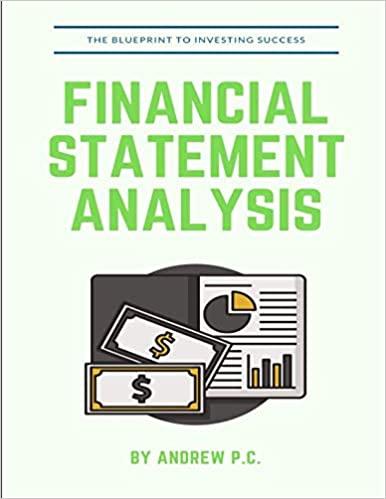

You are evaluating the HomeNet project under the following assumptions: new tax laws allow 100% bonus depreciation (all the depreciation expense, $7.5 million, occurs when the asset is put into use, in this case immediately). Research and development expenditures total $15 million in year 0 and selling, general, and administrative expenses are $2.8 million per year (assuming there is no cannibalization). Also assume HomeNet will have no incremental cash or inventory requirements (products will be shipped directly from the contract manufacturer to customers). However, receivables related to HomeNet are expected to account for 15% of annual sales, and payables are expected to be 15% of the annual cost of goods sold. Under these assumptions and assuming a cost of capital of 12%, calculate: a. The break-even annual sales price decline if: sales of 50,000 units in year 1 increase by 47,000 units per year over the life of the project, the year 1 sales price is $260/unit, and the year 1 cost of $120/unit decreases by 19% annually. See . b. The break-even annual unit sales increase if: sales are 50,000 units in year 1, the year 1 sales price of $260/unit, decreases by 10% annually and the year 1 cost of $120/unit decreases by 19% annually. See ! Year 0 1 47 - 10% 19% 50 260 120 97 234.00 97.20 144 210.60 78.73 191 189.54 63.77 HomeNet Units Sales (000s) Sales Price ($/unit) Cost of Goods Sold ($/unit) Operating Expenses ($000s) Hardware & Software Develop. Marketing & Technical Support Capital Expenditures Lab Equipment Depreciation Corporate Tax Rate (15,000) (2,800) (2,800) (2,800) (2,800) (7,500) 100% 20% 20% 20% 20% 20% Year 0 1 2 3 4 13,000 (6,000) 7,000 (2,800) 22,698 (9,428) 13,270 (2,800) 30,326 (11,337) 18,989 (2,800) 36,202 (12,180) 24,022 (2,800) Incremental Earnings Forecast ($000) 1 Sales 2 Cost of Goods Sold 3 Gross Profits 4 Selling, General, and Administrative 5 Research and Development 6 Depreciation 7 EBIT 8 Income Tax at 20% 9 Unlevered Net Income Free Cash Flow ($000) 10 Plus: Depreciation 11 Less: Capital Expenditures 12 Less: Increases in NWC 13 Free Cash Flow (15,000) (7,500) (22,500) 4,500 (18,000) 4,200 (840) 3,360 10,470 (2,094) 8,376 16,189 (3,238) 12,951 21,222 (4,244) 16,978 7,500 (7,500) - - (1,050) 2,310 1 . (941) 7,435 2 (18,000) 0 (857) 12,094 3 (755) 16,223 4 3,603 Year (18,000) 2,310 7 ,435 12,094 16,223 3,603 Net Present Value ($000) 1 Free Cash Flow 2 Project Cost of Capital 12% 3 Discount Factor 4 PV of Free Cash Flow 5 NPV 1.000 (18,000) 10,952 0.8929 2,063 0.7972 0.7118 5,9278,609 0.6355 10,310 0.5674 2,044 You are evaluating the HomeNet project under the following assumptions: new tax laws allow 100% bonus depreciation (all the depreciation expense, $7.5 million, occurs when the asset is put into use, in this case immediately). Research and development expenditures total $15 million in year 0 and selling, general, and administrative expenses are $2.8 million per year (assuming there is no cannibalization). Also assume HomeNet will have no incremental cash or inventory requirements (products will be shipped directly from the contract manufacturer to customers). However, receivables related to HomeNet are expected to account for 15% of annual sales, and payables are expected to be 15% of the annual cost of goods sold. Under these assumptions and assuming a cost of capital of 12%, calculate: a. The break-even annual sales price decline if: sales of 50,000 units in year 1 increase by 47,000 units per year over the life of the project, the year 1 sales price is $260/unit, and the year 1 cost of $120/unit decreases by 19% annually. See . b. The break-even annual unit sales increase if: sales are 50,000 units in year 1, the year 1 sales price of $260/unit, decreases by 10% annually and the year 1 cost of $120/unit decreases by 19% annually. See ! Year 0 1 47 - 10% 19% 50 260 120 97 234.00 97.20 144 210.60 78.73 191 189.54 63.77 HomeNet Units Sales (000s) Sales Price ($/unit) Cost of Goods Sold ($/unit) Operating Expenses ($000s) Hardware & Software Develop. Marketing & Technical Support Capital Expenditures Lab Equipment Depreciation Corporate Tax Rate (15,000) (2,800) (2,800) (2,800) (2,800) (7,500) 100% 20% 20% 20% 20% 20% Year 0 1 2 3 4 13,000 (6,000) 7,000 (2,800) 22,698 (9,428) 13,270 (2,800) 30,326 (11,337) 18,989 (2,800) 36,202 (12,180) 24,022 (2,800) Incremental Earnings Forecast ($000) 1 Sales 2 Cost of Goods Sold 3 Gross Profits 4 Selling, General, and Administrative 5 Research and Development 6 Depreciation 7 EBIT 8 Income Tax at 20% 9 Unlevered Net Income Free Cash Flow ($000) 10 Plus: Depreciation 11 Less: Capital Expenditures 12 Less: Increases in NWC 13 Free Cash Flow (15,000) (7,500) (22,500) 4,500 (18,000) 4,200 (840) 3,360 10,470 (2,094) 8,376 16,189 (3,238) 12,951 21,222 (4,244) 16,978 7,500 (7,500) - - (1,050) 2,310 1 . (941) 7,435 2 (18,000) 0 (857) 12,094 3 (755) 16,223 4 3,603 Year (18,000) 2,310 7 ,435 12,094 16,223 3,603 Net Present Value ($000) 1 Free Cash Flow 2 Project Cost of Capital 12% 3 Discount Factor 4 PV of Free Cash Flow 5 NPV 1.000 (18,000) 10,952 0.8929 2,063 0.7972 0.7118 5,9278,609 0.6355 10,310 0.5674 2,044








